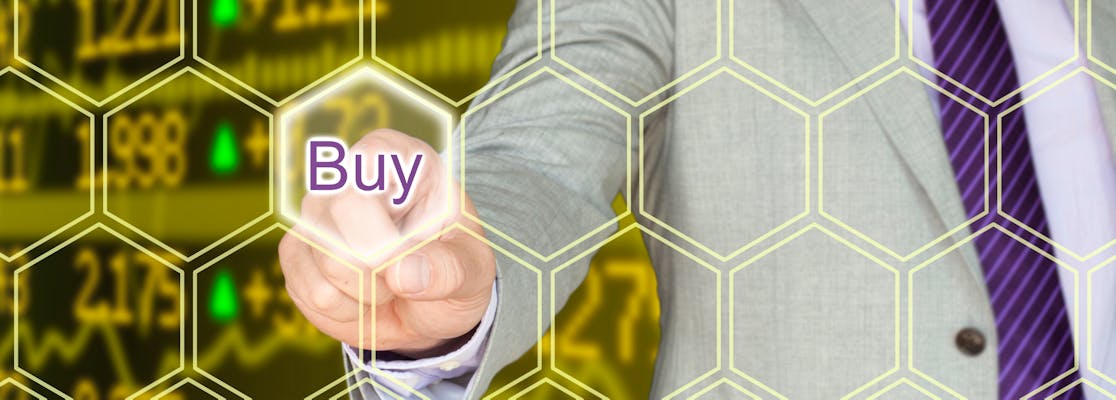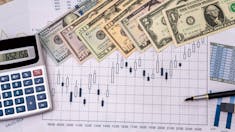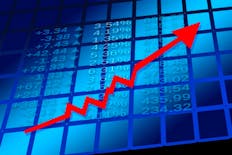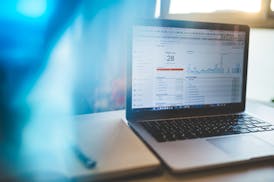What Are Market Making Strategies & Market Makers (Guide 2025)
All products and services featured are independently selected by WikiJob. When you register or purchase through links on this page, we may earn a commission.
- Best Trading Platforms For a Market Making Strategy in January 2025:
- Review of the 5 Best Trading Platforms for Market Making Strategies in 2025
- What Is a Market Maker?
- What Is Market Making?
- Understanding Market Makers
- One of the Market Maker Examples
- Market Makers VS Brokers: What's the Difference?
empty
empty
empty
empty
- Market Makers VS Brokers: What's the Similarities?
empty
empty
empty
empty
- Market Makers – Limit Orders vs Market Orders
- Delta Neutral Strategy
- High-Frequency Trading – The Stoikov Market Maker Strategy
- Grid Trading Strategy for Market Makers
- Market Makers Myths
empty
empty
- Market Makers When Using Leveraged Trading Services (CFDs, Spread Betting, etc.)
- How to Become a Market Maker: Steps-by-steps
- Crypto Market Making Strategy in January 2025
- Frequently Asked Questions
- Final Thoughts
A market maker is someone who places buy and sell limit orders on an exchange simultaneously, with the hope that someone will come along and fill their order.
They are not interested in the price of the underlying instrument but are instead acting as an intermediary between buyers and sellers.
The closest real-world example is a currency exchange desk at an airport. Their goal is to buy and sell as quickly as possible, without building up a huge inventory in any one currency.
On an electronic exchange, there are a number of market makers, all jostling to quote the best prices, much as you would have several currency desks at an airport.
Best Trading Platforms For a Market Making Strategy in January 2025:
Review of the 5 Best Trading Platforms for Market Making Strategies in 2025
1. Plus500
Pros
- User-friendly
- No commissions
- Demo account
Cons
- Lack of ownership
- Leverage risk
- Spreads
Plus500 was founded in 2008, and is considered to be a high-trust broker because not only is it regulated by top-tier bodies like the FCA in the UK and ASIC in Australia, but it is also listed on the London Stock Exchange.
Plus500 offers CFDs, 71 forex pairs and stocks. You can trade using its proprietary platform, which is available as a desktop download, a web trader and a useful, well-designed and streamlined mobile app.
Deposits and withdrawals are fast and free, and you can use a bank transfer, eWallets, and credit or debit cards to fund your account.
The minimum deposit is quite high, however, at £100.
The trading fees are about average, so there is not too much cost involved with making trades or maintaining an account at Plus500.
Plus500 does not offer access to platforms like MetaTrader, but it does have a proprietary platform called Web Trader that is simple and easy to use with a range of charting options and trading tools.
However, for those who like a lot of research in their trading apps, Web Trader and Plus500 as a whole does not provide that much detailed information.
For beginner traders, Plus500 does have a demo account where you can practice trading without risking your own capital, and the Trading Academy has a reasonable amount of educational material in the form of videos, eBooks and articles.
There is also a Traders Guide which has some further learning resources.
2. IG
Pros
- Wide range of instruments
- User-friendly platfomr
- Educational resources
Cons
- Risk of loss
- Complexity
- Fees and spreads
IG invented spread betting in 1974 and today is the world’s leading online trading provider with more traders trusting them with their money than anyone else
IG is authorised and regulated by the FCA and provides traders access to over 18,000 markets. IG offers more 24-hour indices than any other provider, and extended hours on over 70 key US stocks
For those who prefer to own the underlying asset, IG offers access to over 13,000 global shares and ETFs, or a wealth portfolio managed by one of their experts.
Benefits:
- Advanced platform and charting – L2 dealer, ProRealTime and MT4
- Demo account
- Extended trading hours
- Extensive range of products
- Daily expert analysis & educational resources
- Round-the-clock customer service
- Negative balance protection for retail clients
Based on revenue (published financial statements, October 2022). 24/7 excludes the hours from 10 pm Friday to 8 am Saturday (UK time), and 20 minutes just before the weekday market opens on Sunday night.
3. AvaTrade
Pros
- Trading signals and strategies
- Automated trading
- User-friendly interface
- Variety of trading pairs
- Transparency
Cons
- Reliance on signals
- Subscription cost
AvaTrade, like many other reputable brokers, operates with a market-making strategy.
As a market maker, AvaTrade ensures there is ample liquidity in the markets it offers. This means that traders can buy and sell financial instruments, such as forex pairs, cryptocurrencies, commodities, and stocks, with ease, as AvaTrade is ready to execute trades on both the buy and sell side.
AvaTrade continuously quotes bid (buy) and ask (sell) prices for various financial instruments on its trading platform. These prices are derived from the interbank market and other liquidity providers, and AvaTrade adds its markup or spread to cover its costs and profit margin.
AvaTrade manages its risk exposure by hedging its clients' trades in the broader financial markets. For example, if a client buys a currency pair, AvaTrade may offset this risk by taking an opposite position in the interbank market or through other liquidity providers.
AvaTrade offers competitive spreads to its clients, which is the difference between the bid and ask prices. While AvaTrade adds a markup to the raw spreads it receives from liquidity providers, it strives to keep these spreads tight to attract traders.
4. Coinrule
Pros
- Works with a range of cryptocurrency exchange platforms
- Free account option available
- Various subscription tiers available to suit different needs
- User-friendly interface
Cons
- Monthly subscriptions can be expensive
- No mobile app
Fee: Free with a starter account or from $29.99 per month
With its simple, intuitive design, Coinrule is a good choice for those who are new to trading as well as more advanced traders.
Users don’t need to know any code to set their trading rules.
Coinrule is web-based and works across several cryptocurrencies as well as supporting some of the most widely-used exchanges, such as BitMex.
5. Freedom24
Pros
- 30-day commission-free trading for new customers
- Plenty of choice in stocks, options, ETFs, and futures
- Interest-earning savings accounts available for all customers
Cons
- High withdrawal fee
- Complicated account fee and commission structure
- Lack of customizable charts
Freedom24 is a CySEC regulated broker that offers access to 15 major exchanges as well as more than a million trading instruments. Open to customers in Europe only, account opening is fast and simple, and customer support is available via email, live chat, and phone if you need any help.
New customers can take advantage of a 30-day commission-free trading account as well as a demo account to get used to the platform, which is simple and intuitive to use whether you are using the web trader or the mobile app. You will be able to find all your trades, check out the research and charting tools, and make decisions about when to buy and sell easily, but both the web trader and the mobile app have limited customisation options which can limit the more experienced trader.
Account fees are minimal, with no inactivity fee and no minimum deposit – but there is a €7 withdrawal fee per order fulfilled which you will need to bear in mind if you are not making use of the built in savings account.
For the beginner, there is plenty of education available – and the more experienced trader can also benefit from the research and investment recommendations from the Freedom Finance professionals.
What Is a Market Maker?
Market Makers are a financial entity, often a brokerage firm or a financial institution, that facilitates trading in financial markets by providing liquidity.
Market makers play a crucial role in ensuring smooth and efficient trading by buying and selling assets, such as stocks, currencies, cryptocurrencies and commodities, on their own account.
What Is Market Making?
Market Making is the practice of a market maker providing bids (prices at which they are willing to buy) and asks (prices at which they are willing to sell) for a particular asset. This creates a two-way market, allowing other traders to transact at these prices.
Top Market Makers are the most influential and active market makers in a particular market. They often handle a significant portion of the trading volume and play a crucial role in maintaining liquidity and price stability.
Understanding Market Makers
Two-Way Trading or a Two-Way Market refers to a market where both buying and selling orders can be executed at any given time. This is facilitated by market makers who provide bid and ask prices, ensuring that there are always opportunities to buy and sell.
Market Maker Signals are the indications provided by market makers regarding their willingness to buy or sell a particular asset. These signals include their bid and ask prices, which are essential for traders to understand the current market conditions.
Automated Market Makers (AMMs) are a type of market maker that operates using computer algorithms and smart contracts to automatically adjust prices based on supply and demand. They are commonly used in decentralized finance (DeFi) ecosystems, particularly in the context of cryptocurrencies.
List of Market Makers refers to a compilation of various market maker entities that actively participate in specific financial markets. These lists can help traders and investors identify the major players in a market.
Crypto market making strategy involves providing liquidity and facilitating trading in cryptocurrency markets. Cryptocurrency market makers operate similarly to traditional market makers but within the context of digital assets.
Market makers play a critical role in maintaining liquidity and efficiency in financial markets, ensuring that traders can easily execute transactions and that prices remain stable. Their activities contribute to the overall health of the financial ecosystem by reducing bid-ask spreads and minimizing price volatility.
One of the Market Maker Examples
Consider this:
You own 100 shares of Apple and you'd like to sell them. When you click 'sell' in your online brokerage, somebody, somewhere else in the world, has to buy those shares from you, at that exact quantity and price.
The odds of having another investor, sitting at home, who's placed an order to buy exactly 100 shares of Apple at the same time is low.
Market makers serve as a go-between.
A market maker will buy your shares from you, with the hope that they can flip them for a tiny markup to the next investor who comes along.
This difference between the buying price and the selling price is called the spread.
Market makers differ from investors in that they want to hold the shares for as little time as possible (as there's a risk the price will change), and want to trade as often as possible, to pick up those tiny spreads.
For small lots, market making for shares is done electronically.
For large blocks of shares, these are traded away from the main exchange, usually by the broker calling different market makers and trying to do deals on the phone.
Market makers will be members of an exchange. This means that instead of paying a fee per transaction, they will pay a fixed subscription and every individual trade is free.
Market makers are necessary for the proper functioning of a market, so exchanges may often incentivise market makers with rebates, inside information or better technology.
Open a Free Demo Account with eToro
eToro is a multi-asset investment platform. The value of your investments may go up or down. Your capital is at risk.
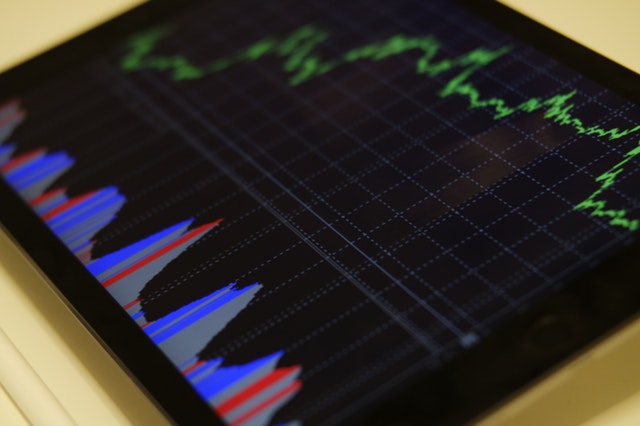
Market Makers VS Brokers: What's the Difference?
1. Role and Function
Market Makers: Their primary role is to provide liquidity by continuously offering buy and sell prices for a specific set of securities or assets. They facilitate trading by acting as counterparties to trades and profiting from the bid-ask spread.
Brokers: Brokers act as intermediaries between buyers and sellers. They execute orders on behalf of their clients by finding the best available prices in the market. Brokers do not take a position in the trades; instead, they earn a commission or fee for their services.
2. Profit Mechanism
Market Makers: They make a profit from the difference between the bid and ask prices, known as the spread. This is the compensation for providing liquidity and taking on the risk of holding positions.
Brokers: Brokers make money through commissions, fees, or markups on the spread. They earn a fixed or percentage-based fee for facilitating trades.
3. Position Taking
Market Makers: They actively take positions by buying and selling assets to maintain liquidity in the market. This involves holding inventory.
Brokers: Brokers do not hold positions or inventory. They execute trades on behalf of clients and do not take a direct position in the assets being traded.
4. Risks and Conflicts of Interest
Market Makers: There can be potential conflicts of interest, as market makers may trade against their clients or take positions that benefit their own interests.
Brokers: Brokers aim to find the best execution for their clients and do not have a direct conflict of interest, as they do not take positions themselves.
Market Makers VS Brokers: What's the Similarities?
1. Intermediaries
Both market makers and brokers act as intermediaries in financial markets.
They play a crucial role in facilitating trading between buyers and sellers.
2. Liquidity Provision
Both entities contribute to liquidity in the market.
Market makers provide continuous bid and ask prices, while brokers connect buyers and sellers to execute trades.
3. Market Expertise
Both market makers and brokers have a deep understanding of the markets they operate in.
They need to stay informed about market conditions, trends, and news to make informed decisions.
4. Financial Market Participation
Both market makers and brokers are integral to the functioning of financial markets, ensuring that trading is efficient and accessible.
Market Makers – Limit Orders vs Market Orders
A quick primer on orders:
As a speculator, trader or investor, you would normally enter the market with a market order.
That's an order to trade a share at the best available market price at that moment.
You are referred to as a 'taker', as you take liquidity out of the market.
You do this because you think the market is mispriced and you're willing to bet you're right.
Market makers, by comparison, only use limit orders.
Limit orders specify the exact (and only) price they're willing to be filled at.
A limit order of 10 shares at $100 will sit waiting on the exchange’s limit order book until a market order comes along and takes it.
A market order tells the exchange to fill an order at the best possible price being offered in the exchange’s limit order book, right now, without waiting for a potentially better price.
An exchange matches limit orders to market orders.
Delta Neutral Strategy
Market makers are just trying to earn a tiny markup (spread) between the price at which they buy and sell shares, and want to do this trade as often as possible.
Market makers, when they have bought a bunch of shares, now have an outright risk, as, if the price moves against them while they hold it, they would be stuck with a loss.
To counteract this, market makers will seek to offload the risk in another place.
The simplest example of this would be two cryptocurrency exchanges.
Market makers would put limit orders on an exchange with low liquidity, and when those orders are filled, immediately send a market order (on the opposite side) to an exchange with higher liquidity.
So, if they bought on one exchange, they'd sell on another.
In this way, though, they'd have open positions on both exchanges, they sum to zero, and there's no outright position (gains on one exchange offset the losses on the other).
They'd then do the reverse to try and unwind their inventory.
The price the market makers would offer on the low liquidity exchange would be the cost of filling the market order on the higher liquidity exchange, plus a small profit.
In this way, a market maker picks up lots of little ‘ risk-free ' profits every time they trade.
This is easy to do on relatively new markets with low liquidity.
Early market makers can often make a killing here by charging large spreads.
Established/high liquidity markets tend to have very tight spreads by comparison.
Market makers adopting this strategy look for edges by:
- Looking for new exchanges/low liquidity exchanges
- Doing deals with exchanges, such that they get rebates (paid) to make markets
- Doing deals with exchanges, such that they get better information or order types than regular market participants
- Technology – Use of faster-than-internet microwave towers to spread markets; for example, between Chicago and London. Having price and order info before everyone else results in guaranteed profits. This falls into the category broadly known as 'high-frequency trading'.
High-Frequency Trading – The Stoikov Market Maker Strategy
This is a different market making strategy, based on a paper by Stoikov and is the basis of high-frequency market-making .
In this strategy, market makers place buy and sell orders on both sides of the book, usually 'at-the-touch' (offering the best prices to buy & sell on the whole exchange), which means that they will be filled whenever someone comes along with a market order.
This ‘at-the-touch’ strategy is sometimes called ‘joining the spread’. Instead of having a strategy of your own, you’re effectively copying what all the market makers are doing.
This market maker strategy trades as often as possible, constantly filling buy and sell orders around the market price.
The strategy assumes an approximately even distribution of buy and sell orders.
This is a simple way of saying that prices are a random walk.
When this is the case, the strategy makes money.
If the orders become lopsided, for example, there is a string of buys, which you'll tend to get when the market is trending upwards; here, the strategy loses money.
If you sit and watch order books on real exchanges (visit Bitmex for an example), you can see when the price moves quickly, liquidity suddenly vanishes as market makers widen their spreads and hedge their bets.
This strategy has what is known as a negative skew, as it makes small amounts of money most of the time and takes the occasional loss when things turn against it.
When a market maker gets a fill they wish they hadn’t (for example, in a trending market), this is called adverse selection. Market makers seek to avoid adverse selection as much as possible.
Many market makers will choose to accumulate inventory if they have an insight (for example, if a market is trending, they might set higher sell prices).
Grid Trading Strategy for Market Makers
This is an extension of the Stoikov strategy.
In this case, a market maker places limit orders throughout the book, of increasing size, around a moving average of the price, and then leaves them there.
The idea is that the price will 'walk through' the orders throughout the day, earning the spreads between buys and sells.
As the order sizes get larger with the spreads, this strategy has the martingale effect – it effectively doubles down as prices deviate from the average price.
Unlike Stoikov, as the orders are further apart, fills happen less often, but the spreads (and hence profits) are larger.
In this market making strategy, the most important thing is calculating the average price.
The best way to do this is:
- A moving average of prices
- A moving average of prices + a jump function (a function that resets the average after a sudden spike)
- The current best bid-offer price, reset periodically (as per the high-frequency algorithm described above)
- Looking at the prices on other exchanges/related instruments (sometimes called statistical arbitrage)
Trade with eToro – #1 Trading Platform
eToro is a multi-asset investment platform. The value of your investments may go up or down. Your capital is at risk.
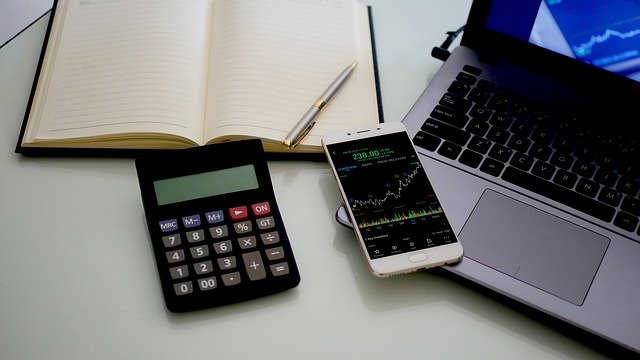
Market Makers Myths
Market Makers Set Prices
It’s true that market makers quote prices for instruments, however, in most markets, market makers compete with each other and are subject to supply and demand. In this way, they only set prices in as much as a currency desk at an airport can set prices.
Market Makers and Stop Hunting
There is an idea that market makers perform an action called stop hunting , where they influence prices to a point where stops are triggered, generating a stop run (lots of executing stops, which causes the price to trend in one direction or another).
Manipulating the price in this way is not permitted on regulated markets.
Some proprietary trading market makers will run more aggressive strategies, but typically these strategies involve exploiting weaknesses in competing maker’s strategies.
Market Makers When Using Leveraged Trading Services (CFDs, Spread Betting, etc.)
Services that offer CFDs and spread bets to consumers act as market makers, but only on their own platform.
In this way, you are cut off from the competitive spreads you get on a real exchange.
These services charge substantial spreads to customers (as well as funding fees).
They offload their risk in the main market (see the delta neutral example above), so they'll make a guaranteed profit.
These CFDs and spread bets are not like trading in the real market.
My own back-of-an-envelope calculation implies you'd need to make a 30% return a year, just to offset the fees of trading with CFDs. The costs of spread bets are larger still.
There are exchange-traded CFDs, but if you are looking for this type of leverage and exposure in equities, you'd be better off using options, not CFDs or a spread bet.
How to Become a Market Maker: Steps-by-steps
Becoming a market maker involves establishing a presence in financial markets by providing liquidity and facilitating trading. Market makers play a crucial role in maintaining efficient markets by continuously offering buy and sell prices for various assets.
Here's a general guide on how to become a market maker:
Step 1. Understand the Role
Educate yourself about the responsibilities, risks, and mechanics of market making.
Understand how bid-ask spreads, order book management and risk management work.
Step 2. Learn the Market
Gain a deep understanding of the specific market you want to operate in, whether it's stocks, options, forex, cryptocurrencies or commodities.
Study market trends, trading patterns and the behavior of different market participants.
Step 3. Capital and Resources
Market making requires substantial capital to support inventory and manage risk. Determine how much capital you're willing to commit to your market making activities.
Additionally, you'll need trading software, data feeds, and possibly direct market access (DMA) to exchanges.
Step 4. Regulation and Licensing
Research the regulatory requirements for market making in your chosen market. Depending on the jurisdiction and type of assets, you might need licenses and approvals from financial authorities.
Step 5. Technology and Infrastructure
Invest in robust trading technology and infrastructure. This includes reliable trading platforms, real-time data feeds, algorithmic trading strategies and risk management systems.
Step 6. Risk Management
Develop comprehensive risk management strategies to protect your capital from unexpected market movements.
This includes setting position limits, implementing stop-loss measures and using hedging strategies.
Step 7. Algorithm Development
Many market makers use algorithmic trading strategies to efficiently manage their positions and adjust quotes in response to market conditions.
Develop or acquire algorithms that can automatically adjust bid and ask prices.
Step 8. Connectivity to Exchanges
Establish direct connections to exchanges or utilize electronic trading platforms that allow you to interact directly with the order book.
Step 9. Initial Trading
Begin trading with a focus on providing competitive bid and ask prices.
Initially, you might want to focus on a subset of assets or a specific niche to gain experience and build your reputation.
Step 10. Continuous Improvement
Monitor your trading performance, adapt to changing market conditions, and refine your strategies.
Step 11. Network and Relationships
Build relationships with other market participants, including brokers, institutional investors and other market makers.
Step 12. Adherence to Regulations
Ensure that you comply with all relevant regulations and reporting requirements. Market makers are subject to rules that ensure fairness, transparency and market integrity.
Crypto Market Making Strategy in January 2025
A successful crypto market making strategy leverages the expertise of market makers to ensure liquidity and efficient trading in the cryptocurrency markets.
Market makers, also known as top market makers, play a pivotal role by creating a two-way market, consistently providing competitive bid and ask prices.
This approach, called market making, involves maintaining a balanced inventory of digital assets to facilitate quick and seamless transactions for traders.
Utilizing market maker signals and automated market makers, this strategy adapts to real-time market conditions, adjusting bid and ask prices dynamically.
By employing sophisticated algorithms and technology, market makers ensure that the trading environment remains vibrant and accessible.
This strategy encourages healthy competition and attracts a diverse list of market makers, collectively contributing to the growth and maturation of the market making crypto ecosystem.
Frequently Asked Questions
Market making is a trading strategy employed by financial institutions, typically market makers, to provide liquidity and facilitate smooth trading in financial markets.
The goal of market making is to bridge the gap between buyers and sellers by continuously offering to buy and sell a particular asset at different prices.
In essence, market makers act as intermediaries, providing a two-way market (bid and ask prices) that allows traders to execute transactions quickly and efficiently.
The term 'backtesting' is used to describe the process of simulating a strategy to identify any risks or issues before applying it to real-world markets.
It is always a good idea to backtest any strategy which you are considering using. This is because it will offer the opportunity to spot any tweaks and adjustments which need to be made and can potentially reduce the risk of losing money.
To calculate the spread, you should consider the minimum and maximum buying and selling prices. This will give you a range of prices which is known as the spread. To ensure that your price is fair, it should ideally fall between the figures in the spread.
Market making involves the continuous quoting of bid and ask prices for a specific asset in financial markets, with the goal of providing liquidity and facilitating trading between buyers and sellers.
There are three main strategies that are typically used in creating market making strategies:
- Delta neutral market making
- High frequency trading
- Grid trading
There are several different books to consider and each one will have a slightly different stance on how to develop the best strategies. Some of the best books to consider are:
- Trading and Exchanges by Larry Harris
- High Frequency Trading by Irene Aldridge
- The Market Makers Matrix by Evan J Christopher
Many traders will often prefer to use Python when they are creating their trading strategies. This is because it is an extensively available programming option with a wide variety of packages available for data analysis purposes.
Market makers make money through the difference between the bid and ask prices, known as the spread. The spread is the gap between the price at which market makers are willing to buy an asset (the bid price) and the price at which they are willing to sell it (the ask price).
Some of the biggest market makers in various financial markets include:
Nasdaq Market Makers: In the world of equities, firms like Citadel Securities, Virtu Financial, and Susquehanna International Group (SIG) are among the top market makers on Nasdaq and other stock exchanges.
Chicago Mercantile Exchange (CME) Market Makers: In the realm of derivatives and futures, firms like DRW Holdings and Tower Research Capital are prominent market makers on the CME and other derivatives exchanges.
Forex Market Makers: In the foreign exchange market (forex), large global banks such as JPMorgan Chase, Deutsche Bank, and UBS often act as market makers, providing liquidity for various currency pairs.
Cryptocurrency Market Makers: In the realm of cryptocurrencies, market making is prevalent in decentralized exchanges and automated market maker (AMM) protocols. Firms like Alameda Research, Jump Trading, and Galaxy Digital often engage in market making in the crypto space.
Options Market Makers: In options markets, firms like Optiver, IMC, and Wolverine Trading are prominent market makers, providing liquidity and facilitating options trading.
Fixed Income Market Makers: In fixed income markets, major investment banks like Goldman Sachs, Morgan Stanley, and Citigroup often act as market makers for government bonds, corporate bonds, and other fixed income securities.
Commodity Market Makers: In commodity markets, firms like Jane Street and Flow Traders are known for their market making activities in various commodity derivatives.
Delta neutral refers to a trading strategy or position in which the overall delta value of a portfolio or position is zero. Delta is a measure used in options trading to gauge the sensitivity of an option's price to changes in the price of the underlying asset.
High-frequency trading (HFT) is a trading strategy that involves executing a large number of trades at extremely high speeds. HFT firms use sophisticated algorithms and advanced technology to analyze market data and execute trades within milliseconds or even microseconds.
The primary goal of HFT is to capitalize on small price discrepancies, market inefficiencies, and fleeting arbitrage opportunities that exist for only very short periods of time.
Grid trading is a trading strategy that involves placing multiple buy and sell orders at regular intervals or price levels on a financial asset. The primary goal of grid trading is to profit from price fluctuations within a defined range, rather than relying on predicting the direction of the asset's price movement. Grid trading aims to capitalize on market volatility and range-bound conditions.
The market maker buy model is a concept related to market making in the context of trading. In this model, a market maker acts as a buyer in the market by placing bids to purchase assets. Market makers play a crucial role in providing liquidity to the market, and the buy model is one of the two sides of their activity, the other being the sell model.
The market maker sell model is a concept related to market making in the context of trading. In this model, a market maker acts as a seller in the market by placing ask orders to sell assets. Similar to the market maker buy model, the sell model is a crucial aspect of market making and contributes to the liquidity and efficiency of financial markets.
Market maker signals refer to indications provided by market makers through their bid and ask prices in financial markets. These signals offer insights into market sentiment, potential price movements, and the balance between supply and demand for a particular asset. Traders and investors often analyze market maker signals to gain an understanding of how market makers are positioning themselves and to gauge the overall market conditions.
Automated Market Makers (AMMs) are decentralized protocols that facilitate the exchange of assets on blockchain networks without relying on traditional order books or centralized intermediaries. AMMs have gained prominence within the realm of decentralized finance (DeFi) and are commonly used for trading cryptocurrencies and other digital assets.
Final Thoughts
In the world of financial markets, market makers hold a pivotal role in maintaining liquidity and fostering efficient trading.
As top market makers, they stand at the forefront, engaging in the practice of market making to create a dynamic two-way market.
Through their bid and ask prices, market makers signal their commitment to facilitating trades, ensuring seamless transactions for both buyers and sellers.
In the realm of modern trading, the emergence of automated market makers has brought about a transformative shift, enabling decentralized and algorithm-driven trading through liquidity pools.
The landscape of market makers encompasses a diverse list of participants, from traditional financial institutions to innovative players in the market making crypto sphere.
In essence, market makers remain a driving force behind the constant evolution of financial markets, with their ability to adapt, provide liquidity and interpret market maker signals shaping the foundation of trading dynamics.
WikiJob does not provide tax, investment or financial services and advice. The information is being presented without consideration of the investment objectives, risk tolerance, or financial circumstances of any specific investor and might not be suitable for all investors. Past performance is not indicative of future results. Investing involves risk including the possible loss of principal.
